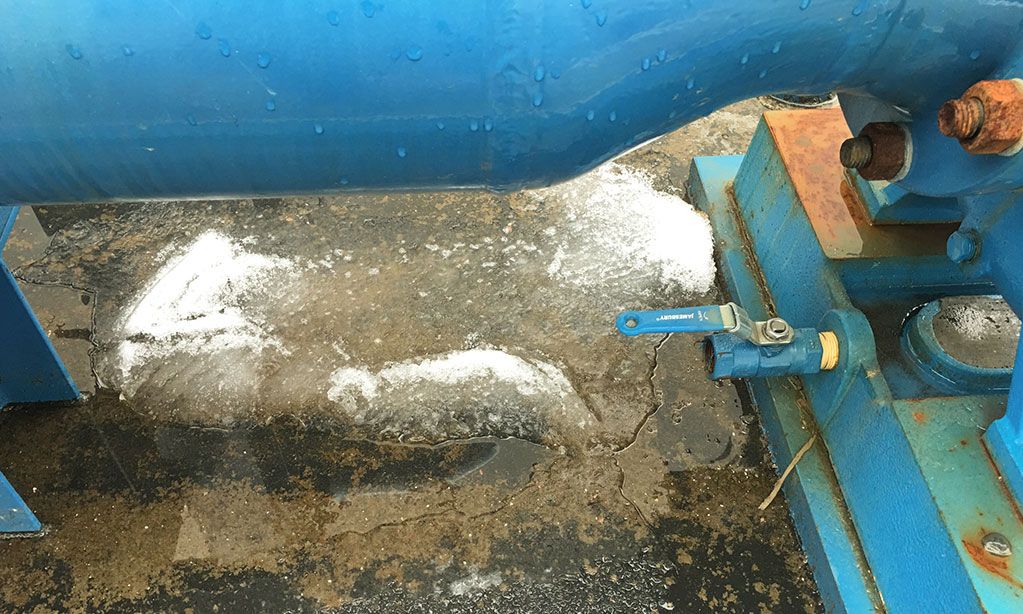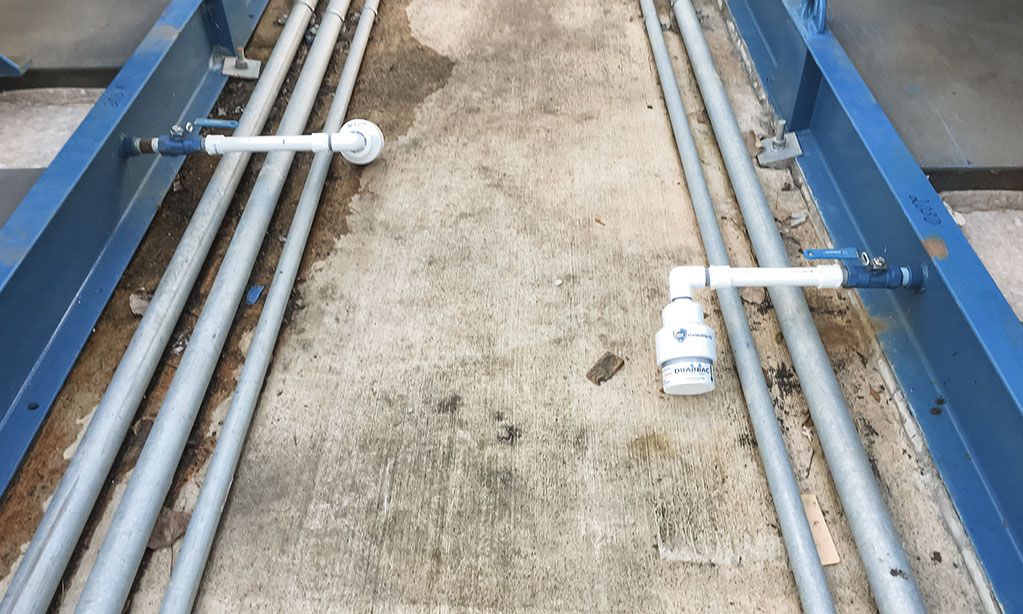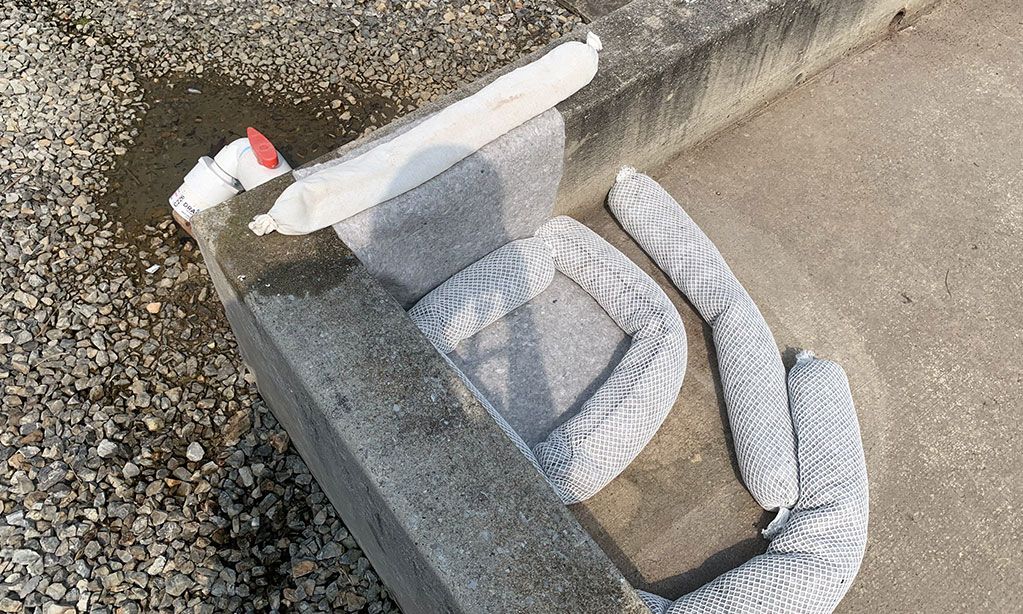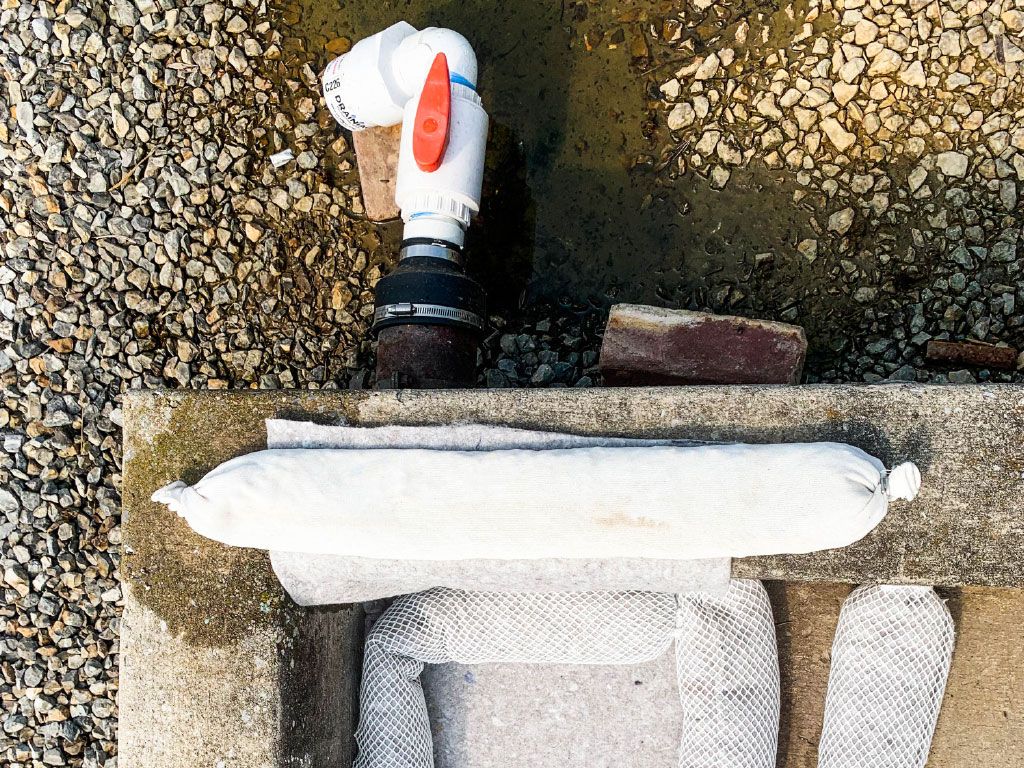

Preventing Ice in Secondary Containment Systems
Draining accumulated rainwater from secondary containment systems is a dreaded chore in warm weather. But it’s a walk in the park compared to considering how you’re going to get two inches of solid ice out of your outdoor sumps.
For remote locations, and even in fully-manned facilities where the weather changes rapidly, keeping secondary containment systems clean and dry in the winter months can be a hassle. There’s not always time to get every system drained before the temperature drops at night, creating ice rinks around every tank and container. Plus, in a 50’ square system, two inches of ice consumes 400 gallons of your sump’s capacity.

Freezing weather brings on a whole new set of problems with our secondary containment. We have to keep a much closer eye on manually draining our stormwater (from cold rain or melting snow). Otherwise, the containment turns into an ice-skating rink.

Cold snaps and snow make containment drainage challenging.

Ice formation significantly reduces your sump’s capacity.
Passive Oil-Water Separators: The Key to Preventing Ice Buildup in Secondary Containment Systems
One secret to keeping systems clean and dry in outdoor systems where oil, fuel and petroleum products are stored is to use passive oil-water separators, like the Drainac® Petroleum Filter Valve. Instead of manually opening valves to discharge stormwater, the Drainiac® Valve allows water to drain from the system while capturing oil, fuel and other hydrocarbons. In the event of a spill or when the filter has reached capacity, the valve closes to prevent costly discharges.
Because the Drainiac® System allows clean water to drain from secondary containment systems continually, rainwater and snowmelt have a much lower chance of accumulating and creating an icy mess. Pre-filters can also help to minimize the amount of time operators spend cleaning out secondary containment areas because they prevent dirt and debris from clogging the discharge piping and valves.
In some areas, strict compliance with drainage regulations means hours spent in the cold weather with pics and blow torches to clear accumulated ice. Keeping sumps dry with Drainiac® Oil-Water Separator Valves helps to keep your facility compliant and your crews warmer.

Last winter, we tested our first Drainiac® Filter Valve. It worked exactly like it was supposed to. The Drainaic® filtered our containment water and captured the sheen. The containment floor remained practically ice-free. Amazing!
Shop Drainiac® Products
Related Articles
NEED SOME HELP?
Call our team directly at 814-822-2004 or email sales@halenhardy.com.



